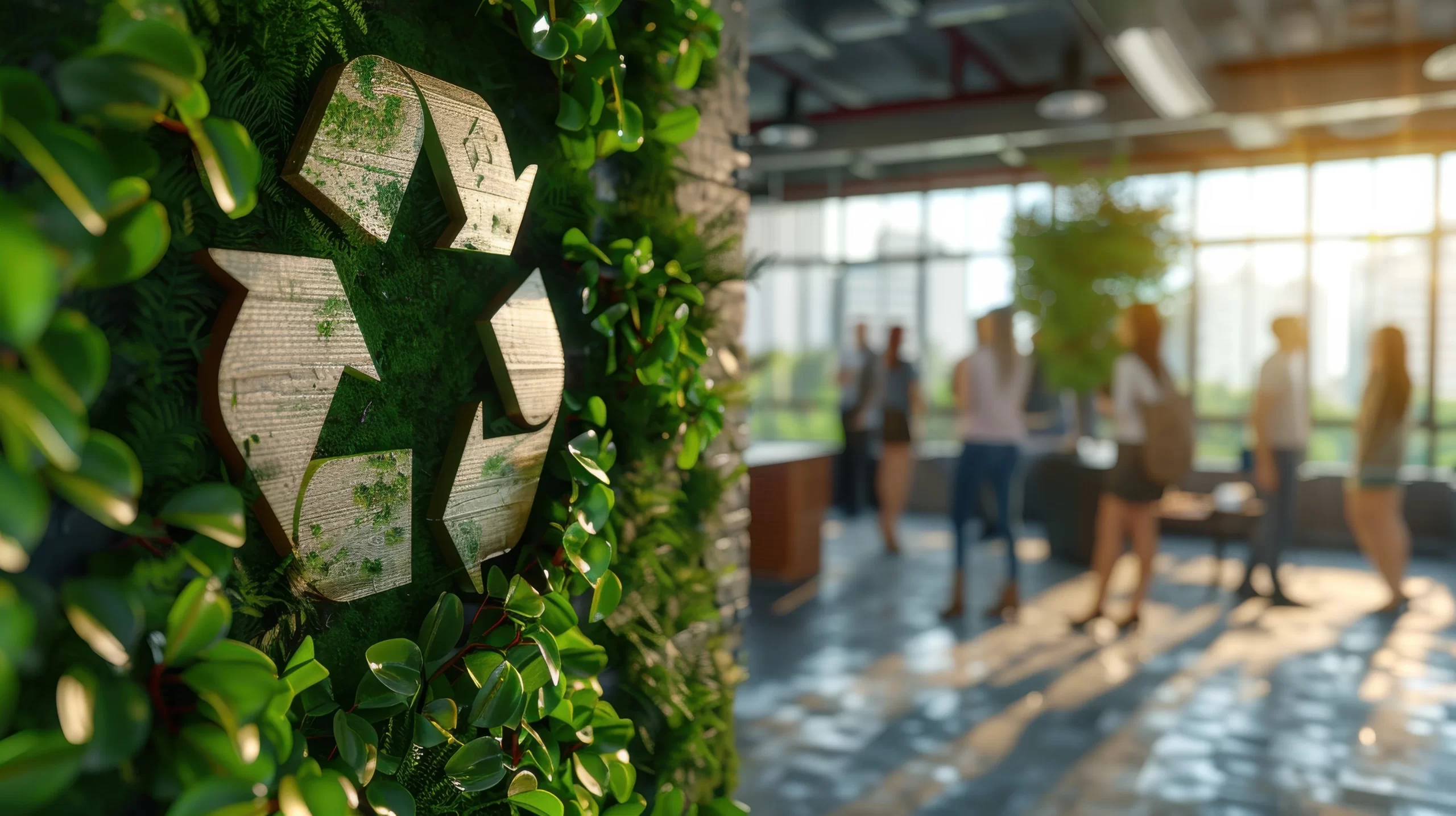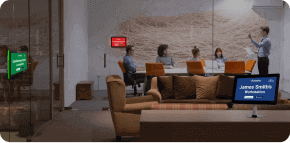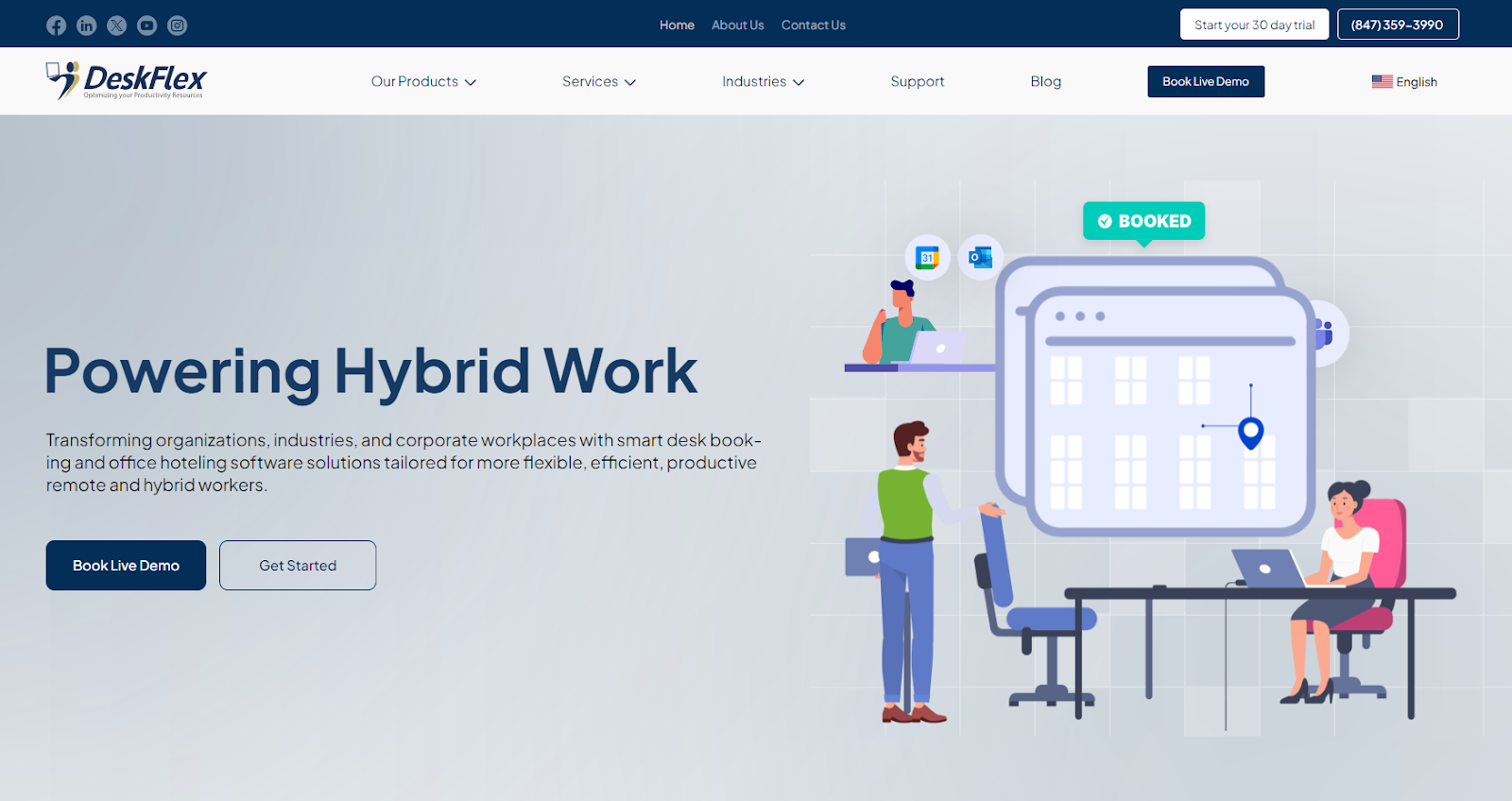
Why is a Sustainable Office Important for Businesses
Creating a sustainable office space is more than just a choice—it’s an important step towards reducing environmental impact and building a sustainable future.
As businesses face increasing pressure to lower their carbon footprint and minimize energy consumption, sustainable offices offer practical solutions that benefit both the planet and the company’s bottom line.
In this article, we will explore the importance of creating a sustainable office design and how energy-efficient systems and sustainable practices can help businesses reduce their environmental impact.
What is a Sustainable Office?
A sustainable or eco-friendly office is a workspace designed to reduce its environmental impact while promoting the well-being of employees.
Offices can contribute to a more sustainable future by adopting sustainable materials, energy-efficient systems, and practices that reduce waste and energy consumption.
The shift to sustainability in office spaces is a response to the growing need for businesses to lower their carbon footprint and energy use.
In fact, the design and operation of office buildings significantly affect energy consumption and environmental degradation.
A sustainable office space minimizes this impact by focusing on reducing greenhouse gas emissions, cutting down on waste, and promoting energy-efficient methods.
Why is a Sustainable Office Necessary?
Sustainability is no longer a trend—it’s a necessity. The environmental and economic benefits of moving towards an energy-efficient office space are clear.
Here’s why businesses should prioritize creating more sustainable office spaces:
Reducing Operating Costs
Implementing energy-efficient systems and LED lighting cuts down on energy bills.
Businesses that incorporate renewable energy solutions like solar panels save on electricity in the long term, leading to significant reductions in overall operating expenses.
Improved Employee Well-Being
A sustainable office design improves indoor air quality by incorporating better ventilation systems, reducing harmful pollutants, and bringing in more natural light.
These factors directly enhance employees’ health, satisfaction, and productivity, creating a more comfortable and motivating work environment.
Boosting Company Reputation
Consumers and potential employees increasingly seek businesses that demonstrate a commitment to sustainability.
By prioritizing sustainability efforts, companies can attract top talent and improve their overall public image, positioning themselves as forward-thinking leaders in their industry.
Contributing to Climate Change Mitigation
Office buildings account for a large percentage of global energy use.
Reducing this through green buildings contributes to the fight against climate change by lowering direct and indirect emissions, which helps businesses align with global sustainability goals.
Key Features of a Sustainable Office Space
A sustainable office incorporates various elements to minimize environmental impact and create a more energy-efficient environment.
Here are the key features that businesses should focus on when designing their sustainable office:
Energy-Efficient Systems: From lighting to HVAC systems, offices need to prioritize energy efficiency to reduce energy consumption. Installing motion sensors and LED lighting ensures energy is only used when necessary.
Natural Light and Ventilation: Incorporating natural light into the office design reduces the need for artificial lighting and improves the workspace’s overall atmosphere. Natural ventilation also improves indoor air quality, important for employee health.
Sustainable Materials: Using recycled materials for office furniture and supplies and sustainable materials in the construction of office buildings helps reduce waste and promotes sustainability throughout the workspace.
Waste Reduction and Recycling Initiatives: Offices can cut down on waste by promoting recycling programs, eliminating single-use plastics, and encouraging the use of recycled paper. Waste reduction contributes to a more sustainable future and saves businesses money on disposal costs.
Energy-Efficient Lighting and HVAC Systems: Installing energy-efficient lighting systems, such as LED lighting, and ensuring that HVAC systems are optimized for energy savings can reduce energy consumption, helping to create a more sustainable office.
Benefits of Sustainable Office Design
The move toward a sustainable office space has numerous benefits for both businesses and the environment. Here are a few key advantages of creating a sustainable office building:
Lower energy consumption: By integrating energy-efficient methods and materials, companies can significantly cut down on their overall energy use. This not only saves money but also reduces the environmental strain.
Positive impact on climate change: Every effort to reduce energy consumption and greenhouse gas emissions contributes to the broader fight against climate change. A sustainable office plays a part in this global initiative.
Cost savings: While the initial cost of transitioning to a sustainable office might be higher, the long-term savings are substantial. Reduced energy bills, lower operating costs, and fewer maintenance needs result in a strong return on investment.
7 Tips for Creating a Sustainable Office Environment
Let’s explore seven practical tips that businesses can implement to create a more sustainable office, reduce their carbon footprint, and contribute to a healthier workplace environment.
1. Incorporate Energy-Efficient Lighting
Use LED lighting and add motion sensors to make sure lights are only on when necessary.
This will reduce energy consumption and lower electricity bills, contributing to long-term cost savings for the business.
2. Use Renewable Energy Sources
Power your office with renewable energy, such as solar panels or wind energy.
This significantly reduces your carbon footprint and dependence on non-renewable sources, helping your business move toward a more sustainable future.
3. Maximize Natural Light and Ventilation
Incorporating natural light into office spaces minimizes the need for artificial lighting.
Similarly, indoor air quality can be improved by utilizing natural ventilation, reducing the reliance on air conditioning systems, improving overall employee well-being, and saving energy.
4. Opt for Recycled and Sustainable Materials
Use recycled materials for office supplies and furniture, and even in building construction, keeping this sustainable office guide in mind.
Leveraging sustainability resources and sourcing eco-friendly materials helps reduce waste, promote a more sustainable future, and improve your company’s environmental responsibility.
5. Implement a Comprehensive Recycling Program
Create recycling stations throughout the office and encourage employees to recycle paper, plastic, and other materials.
Provide clear signage to guide proper waste disposal and track the program’s progress to highlight sustainability efforts.
6. Reduce Energy Use with Smart Technology
Install smart thermostats and energy-efficient systems for heating, cooling, and lighting.
These systems adjust automatically based on occupancy, optimizing energy use throughout the day and lowering overall energy consumption.
7. Encourage Remote Work and Flexible Schedules
By reducing the number of employees in the office at any given time, companies can cut down on energy consumption and carbon emissions related to commuting.
This also offers employees greater flexibility and work-life balance.
How DeskFlex Optimizes a Sustainable Future
DeskFlex helps create a more sustainable office by making it easier for businesses to use their spaces and resources efficiently.
It helps reduce energy use and supports flexible work arrangements, benefiting the environment and employees.
DeskFlex saves energy by managing when desks and meeting rooms are used. By only using spaces when needed, businesses can cut down on unnecessary heating, cooling, and lighting, lowering their energy consumption.
DeskFlex also prevents wasted space through smart scheduling. It avoids overbooking or having empty rooms, which means companies don’t need to expand their office or use extra energy on areas that aren’t being used.
By supporting hybrid work, DeskFlex allows employees to reserve desks on the days they need to be in the office. Fewer people commuting every day reduces carbon emissions from travel.
Finally, DeskFlex helps businesses design more efficient office spaces by providing real-time data on room usage.
FAQs About Sustainable office
What is a sustainable office?
A sustainable office is a workspace that aims to reduce environmental impact by incorporating eco-friendly practices. This includes using sustainable materials, energy-efficient systems, and reducing waste and energy consumption.
What does a sustainability office do?
A sustainability office helps organizations implement and manage sustainable practices to reduce environmental impact. These practices include energy efficiency initiatives, waste reduction programs, recycling, and the use of renewable energy sources.
How do you build a sustainable office?
To build a sustainable office, businesses should incorporate energy-efficient systems, such as LED lighting and HVAC systems, maximize natural light and ventilation, and use recycled materials for furniture and construction.
What is a sustainable workplace?
A sustainable workplace integrates sustainable development principles into its daily operations. This includes minimizing energy consumption, reducing waste, using environmentally friendly materials, and improving the overall well-being of employees.















































 Support
Support  Demo
Demo  Blog
Blog 
